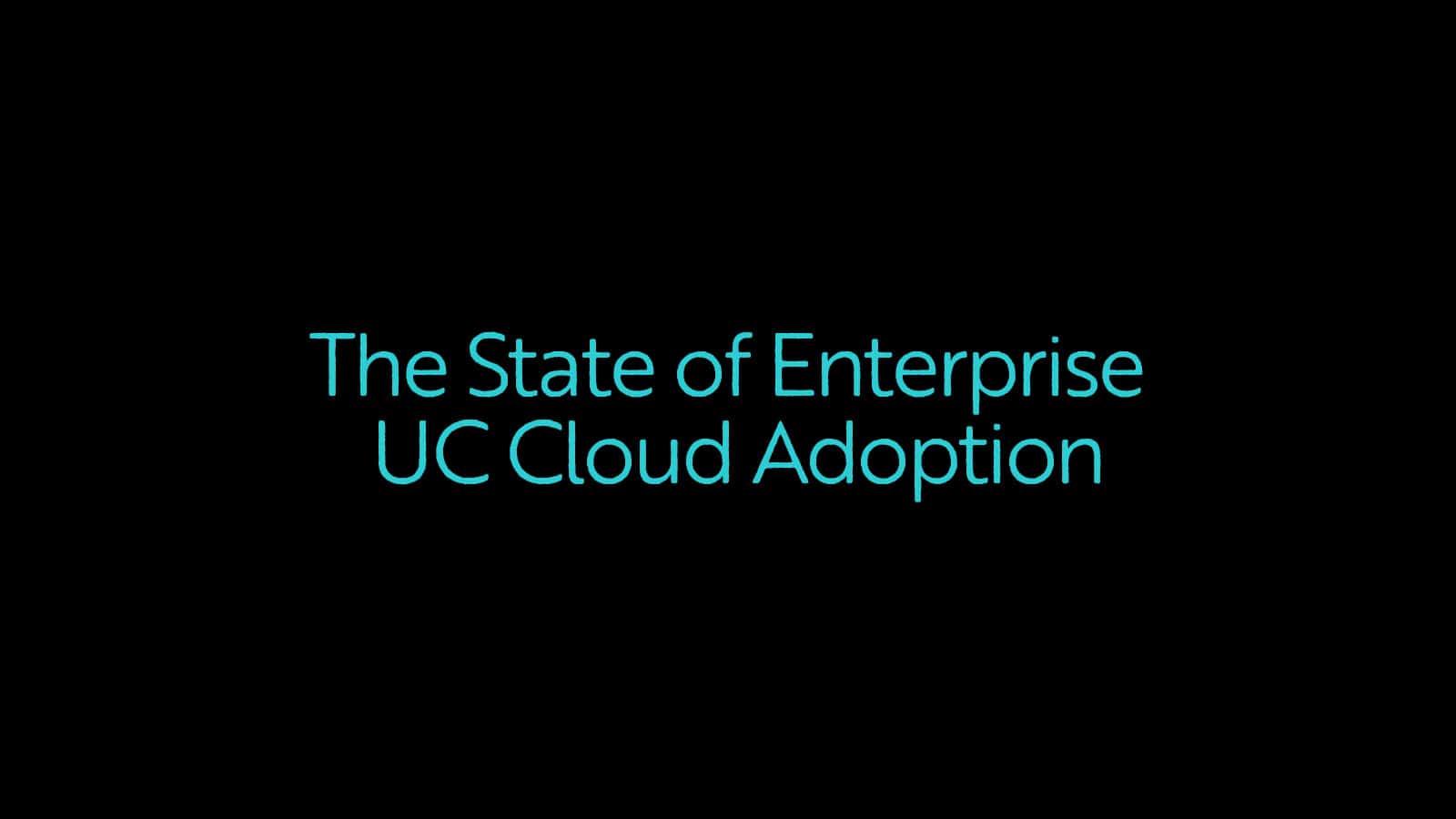
Survey Reveals Current Enterprise Landscape
Effective communication ensures smooth collaboration, enhanced productivity, and streamlined operations in today’s rapidly evolving business landscape. As technology advances, enterprises increasingly turn to unified communications (UC) solutions to optimize communication infrastructure. Adopting cloud-based solutions has gained significant momentum among the emerging trends within the UC realm. In this blog post, we will delve into enterprise unified communications cloud adoption and explore the key findings of a recent survey that shed light on the current landscape of UC deployment models.
Understanding Unified Communications Cloud Adoption
Unified Communications (UC) integrates various communication tools into a unified platform, such as voice, video, messaging, and collaboration applications. This consolidation of communication channels aims to streamline business processes, foster collaboration, and improve overall productivity. The traditional approach to UC deployment involved on-premise solutions, where organizations managed and maintained their communication infrastructure. However, with the advent of cloud computing, many enterprises are transitioning towards cloud-based UC solutions.
The Survey: Examining the Current Landscape

We conducted a comprehensive survey among various organizations to gain insights into the state of enterprise UC adoption. The study aimed to explore the deployment models prevalent in the enterprise UC ecosystem. The results provided valuable information on the current landscape of UC cloud adoption. Here are the key findings:
- On-Premise: Surprisingly, the survey revealed that 25% of enterprises still rely on on-premise UC solutions. These organizations prefer to maintain complete control over their communication infrastructure and may have specific security or compliance requirements that necessitate an on-premise approach.
- Hybrid: The survey highlighted that 36% of enterprises had adopted a hybrid UC deployment model. This hybrid approach combines both on-premise and cloud-based solutions, allowing organizations to leverage the benefits of both environments. Hybrid UC deployment enables businesses to gradually transition to the cloud while retaining certain on-premise systems for specific use cases or legacy applications.
- Cloud-Based: A significant proportion of enterprises, comprising 31% of respondents, have embraced a fully cloud-based UC deployment model. Cloud-based UC offers numerous advantages, including scalability, cost-effectiveness, ease of maintenance, and access to communication services from anywhere with an internet connection. This deployment model aligns well with the evolving needs of modern businesses, enabling seamless communication across geographically dispersed teams.
- Unknown: Lastly, a small percentage of respondents fell under the “unknown” category, indicating a lack of awareness or accurate information about the specific UC deployment model employed within their organization. This result highlights the need for further education and awareness around UC deployment options.
Benefits of Unified Communications Cloud Adoption
The shift towards cloud-based UC adoption is driven by several compelling advantages organizations can leverage to enhance their communication infrastructure and achieve operational excellence. Let’s explore some of the key benefits:
- Scalability: Cloud-based UC solutions offer unparalleled scalability, enabling organizations to accommodate fluctuating business needs efficiently. The cloud’s elastic nature allows for seamless scaling up or down of communication resources based on demand, ensuring optimal performance without costly overprovisioning.
- Cost-effectiveness: By adopting cloud-based UC solutions, organizations can reduce capital expenditure associated with on-premise infrastructure, maintenance, and upgrades. Instead, they can benefit from a subscription-based model that offers predictable costs and eliminates the need for extensive hardware investments.
- Flexibility and Mobility: Cloud-based UC solutions empower employees to communicate and collaborate from anywhere, anytime, and on any device. This mobility enhances workforce productivity and supports remote work initiatives, enabling organizations to adapt to the evolving work environment.
- Simplified Management: With cloud-based UC, organizations can offload the burden of infrastructure management, maintenance, and upgrades to the service provider. Cloud-based UC allows IT teams to focus on strategic initiatives while benefiting from regular updates and feature enhancements.
Conclusion
As the business landscape evolves, unified communications cloud adoption is essential for organizations to enhance communication infrastructure, foster collaboration, and improve productivity. Our recent survey revealed that while a quarter of enterprises still rely on on-premise solutions, cloud-based UC adoption is gaining significant traction, with 31% of organizations already leveraging its benefits. Furthermore, a hybrid UC deployment model is a viable option for many enterprises seeking a gradual transition to the cloud.
By embracing cloud-based UC solutions, organizations can unlock the advantages of scalability, cost-effectiveness, flexibility, and simplified management. As the communication needs of businesses continue to evolve, enterprises must evaluate their current UC deployment model and consider the benefits cloud-based solutions can offer.
The journey toward unified communications cloud adoption represents a significant step in transforming communication infrastructure, driving operational efficiency, and future-proofing businesses in an increasingly digital world.
Ready to take your unified communications from headache to hassle-free?
No throwing darts at proposals or contracts. No battling through the back-end. No nonsense, no run-around.



